Introduction to Challenging Behaviour
About Inspire
Inspire Community Outreach Inc. is an incorporated non-profit social services charity providing evidence and culturally informed, family-centered education and programming, designed to meet the needs of those living with mental health issues and neurological/cognitive differences. Charity # 830697231RR0001
Our mission at Inspire Community Outreach Inc. is to support the mental health of children, youth, and families.
Our vision is the development of a community that supports children, youth and families to recognize and celebrate their strengths and potential, and that puts them in touch with resources that benefit their overall well being.
Who is this made for?
This is for those caring for and/or living with neurodiversities. We see you and understand the unique challenges, as well as incredible strengths this entails. This manual is for parents and/or caregivers who are dealing with challenging behaviour.
Important to know
You may learn some things below that are unfamiliar or feel hard. We understand that it is important to have compassion for ourselves, especially when looking back to times where we didn’t have the information we have today. We are all learning and won’t come to a day where we have all the answers. We all do the best that we can with what we know, and the good news is that we will have opportunities to learn throughout our lives.
Callenging Behaviours and Aggression
Types of Aggression
- Towards peers and siblings
- Towards caregiver
- Verbal and physical
Examples of Difficult Behaviour Could Include…
- (Intense hard emotions)
- Screaming, raised voice, rude noises
- Physical Aggression
- Leaving tasks, avoidance
- Sticky thinking
- “Needy”
- Sensitivity to environment
- Justice Crusader
Understanding Behaviour
- There are no quick fixes! Behaviours take time to learn and take time to unlearn.
- We need to understand the behaviour – understand what function it serves for the child. So, let’s be curious…
- There are no ‘cookie cutter’ solutions. Every child is different.
Understanding the Why Behind Behaviours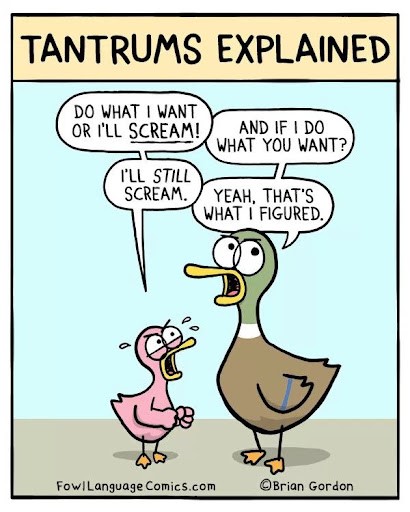
- Biological (e.g. pain, medication, personality, hunger, being tired, energy level)
- Social needs (e.g. attachment, boredom, attention, confusion)
- Sensory information (noise, lighting, temperature)
- Environmental cues and differences ( 2 people can experience it differently)
- Experiences in life
- Communication differences
Non-violent discipline
Most of us were born in a time where there was spanking, aggression, or other types of punishment. The research says that other things like positive reinforcing the positive behaviours is MUCH more effective.
Behavioural Sensitivities
Every person is unique, and so are their triggers, in either intensity, duration, or type.
- Sight
- Taste
- Sound
- Sensation/touch
- Smell
Research shows that social and environmental inputs impact us significantly, with evidence showing that how we experience our disabilities depends on it, which shows up in our symptoms and behaviour.
Being Impulsive
This involves acting before we think and not thinking about the consequences of our actions.
- Some people have it more and others have it less.
- It’s normal for children to have a tough time with this.
- Our Temperament has something to do with it too
- Our Neurology: ADHD/ADD
Helping a child cope with BIG feelings
- 5 steps, what to do if we’re feeling stressed?
- Feelings chart/thermometer
- Celebrate achievements no matter when
- Naming feelings- role modeling and for our children “You look frustrated” Acknowledging feelings without taking them away.
- What is “calm breathing”?
- Calm breathing is a technique that teaches your child to slow down his or her breathing when feeling stressed or anxious.
Why is calm breathing important?
- When we all feel anxious or worried, our breathing changes. It can be short, quick, or shallow and at times people can hyperventilate. Breathing this way makes us feel worse!
- Breathing Calmly can lower anxiety and gives us a sense of control. It can be anywhere with us, and our children can do it even when we are not there.
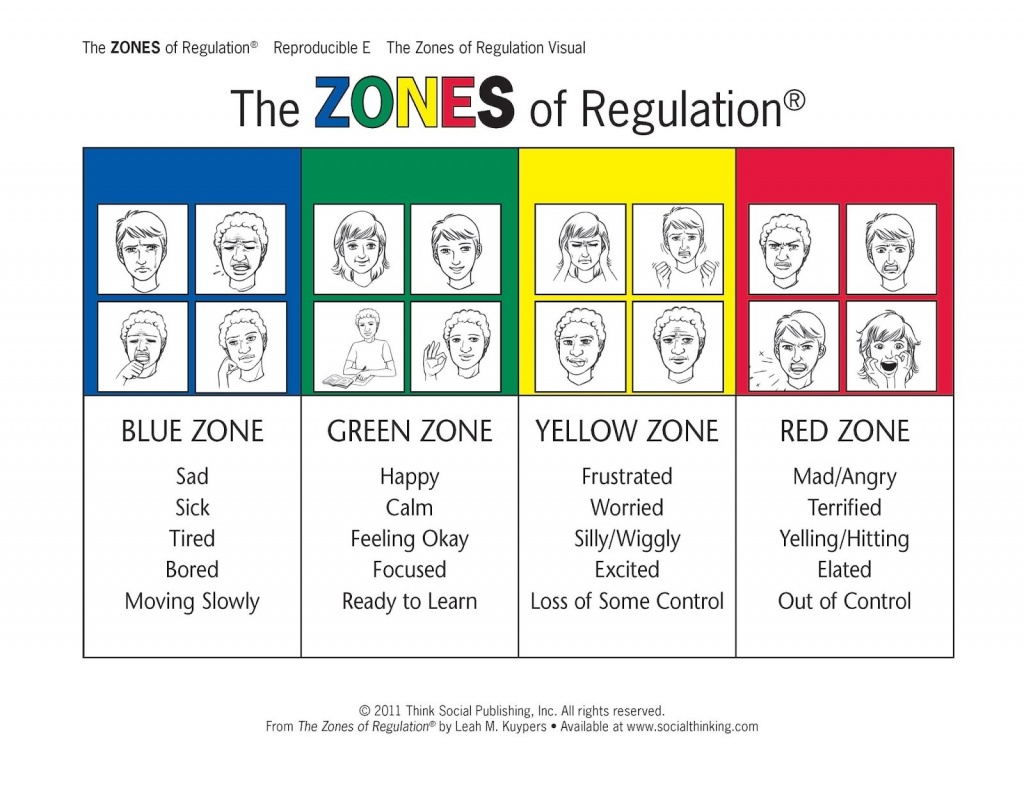 What is Actually Going On During a Child’s Difficult Behaviour
What is Actually Going On During a Child’s Difficult Behaviour
Expectations for children are often that of an adult: Self-regulating/being calm, understanding consequences, using excellent verbal communication, problem-solving. But, this part of the brain is not yet developed.
We tend to focus on the behaviours that frustrate or confuse us instead of the child’s needs that are not being met. Behaviour is an expression of a root cause.
Finally, behaviour is information. There is always a reason, even if the child or those around them don’t understand it yet.
Phases of Escalation and De-Escalation
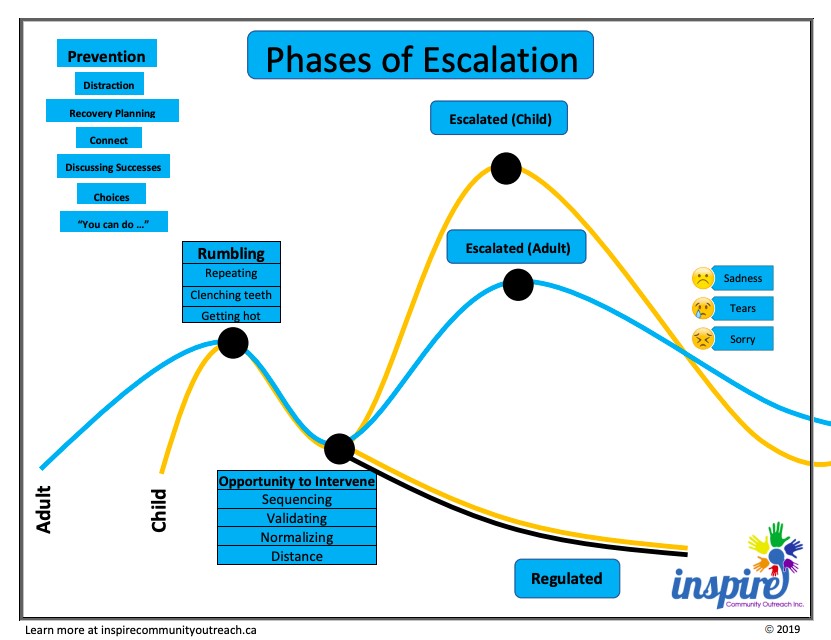 Helpful Responses to Difficult Behaviour
Helpful Responses to Difficult Behaviour
- Low and Slow Technique
- Agree, validate, and provide choices (AVP)
- First/then
- Yes, when…
- Soothing ourselves to then help soothe our child’s nervous system
- Curiosity
- Knowledge/Understanding
Responding to Intense Emotions
When a child has intense emotion/s, try matching their intensity…
- Agree
- Validate
- Low and Slow: Body and Voice
- “I want to help. I’m here when you’re ready.” Power sharing
Try Using a Playfulness Approach
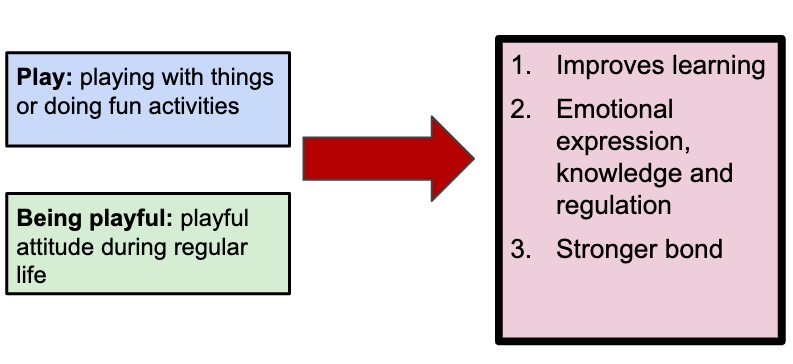 It is still important that these levels of attachment are met. This can help the child feel safe, and thus less reactive in challenging ways.
It is still important that these levels of attachment are met. This can help the child feel safe, and thus less reactive in challenging ways.
Levels of Attachment Includes:
- Proximity
- Sameness
- Belong or Loyalty
- Significance
- Love
- Being Known
Calming Activities to Try Can Include
- Being near animals
- Walking/movement/upside down
- Drawing/creativity
- Writing/journaling
- Lego/building
- Music (on repeat)
- Reading/audiobooks
- Eating/chewing
- Smells
- Nature
How Can We Reframe Positively How We View Behaviours and Sensitivities?
“The child is driven who knows what they like and don’t like, they read people well.”
Kids cannot do this/be “difficult” or press your buttons if they can’t read you.
Building on Positive Attachment
- Invite them to do something with you
Any way in which you invite them into your presence sends the message that you want to be close and connected: read a book, play a game, build something, hold hands during a walk, or tell jokes (You are pretty funny).
- Let them see your delight in them
Smile at them. When they come into the room, let them see your face light up without a reminder or request. Look happy. Nod ‘yes’. Make eye contact as you think, “I like you,” “You are great.” When things are hard, we can do these little things often and our family will feel a difference.
- Be close by
If they don’t want to do something with us, we can move close to them. Make sure it’s a distance they can handle. Watch them play, participate in sports or after school activities, be present when they’re doing homework or an activity. This can be encouraging for them. We don’t have to hover, or say anything.
- Invite them to depend on you
This is hard to understand in our society, because we are taught to be independent. It seems everyone wants to be in charge. How can you invite our children to be dependent on us?
- Decide for them
In those times when stress takes over, we can say, “I’ll figure this out” or “Let me think about it” if you’re not sure what to do. Then take care of it. Or later, take time to brainstorm with them, so it becomes a shared responsibility. This is helpful when you notice frustration and challenges building, or during transition and change.
- Be on their side
If they’re having challenges with friends or school, or have big or hard feelings around other areas of their lives, let them know we’re here to help them rather than blaming, shaming or judging. When they start to share their truths, listen without interrupting. Show them you hear what they have to say. For example, saying “That sounds really tough.”
Let kids know you’re listening (They ALWAYS Know)
- When children are talking about concerns, stop whatever you are doing and listen. Express interest in what they are saying without being intrusive.
- Listen to their point of view, even if it’s difficult to hear. Let them complete their point before you respond. Repeat what you heard them say to ensure that you understand them correctly.
Respond in a way children will hear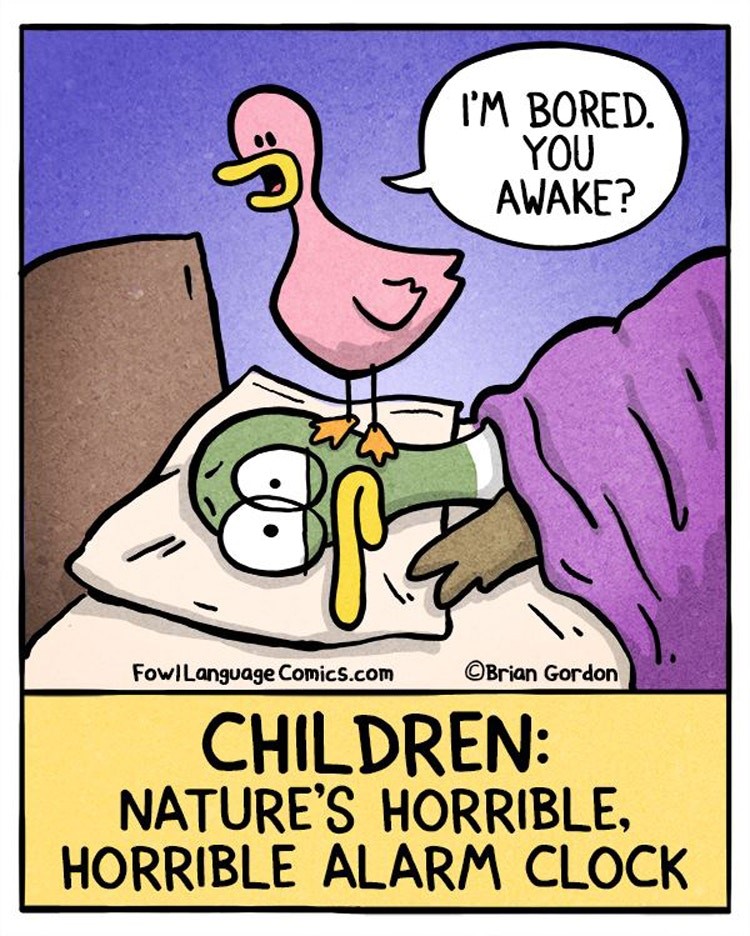
- Soften strong reactions. Express your opinion without putting down theirs; acknowledge that it’s okay to disagree. Resist arguing about who is right. Instead say, “I know you disagree with me, but this is what I think.” Focus on your child’s feelings rather than your own during your conversation. I allow myself 1 DEEP Breath. Okay 2…
- Praising for the process a child used increases motivation and confidence by focusing children on the actions that led to success. It might be effort, strategies, focus, persistence in the face of difficulty and taking on challenges.
Examples
- “I like the way you tried a lot of different strategies on that math problem until you finally got it.”
- “That was a hard English assignment, but you stuck with it until you got it done. You stayed at your desk and kept your concentration. That’s great!”
When Can This be Tried?
During: routines, helping, toys or games, songs, books, being creative. So…All the time!
ABC’s of Awesome
Attitude
- Things to Consider:
- What are the barriers this person faces?
- How would I feel in this person’s situation?
- Why do I think that?
- What are my assumptions?
Behaviour
- Being aware of our attitudes can have a positive impact on our behavior. Showing kindness/understanding, in both small and large ways can build a positive relationship.
- What Do I Do?
- Ask
- Be Kind
- Speak Slow and Low
- Be Curious: What is their experience?
- What Might It Feel Like For Them?
- Fear
- Isolation
- Confused
- Overwhelmed
- Blamed
- Misinformed
Compassion
- The awareness of, understanding and felt sense of suffering, its causes, and the motivation, and intention to alleviate it.
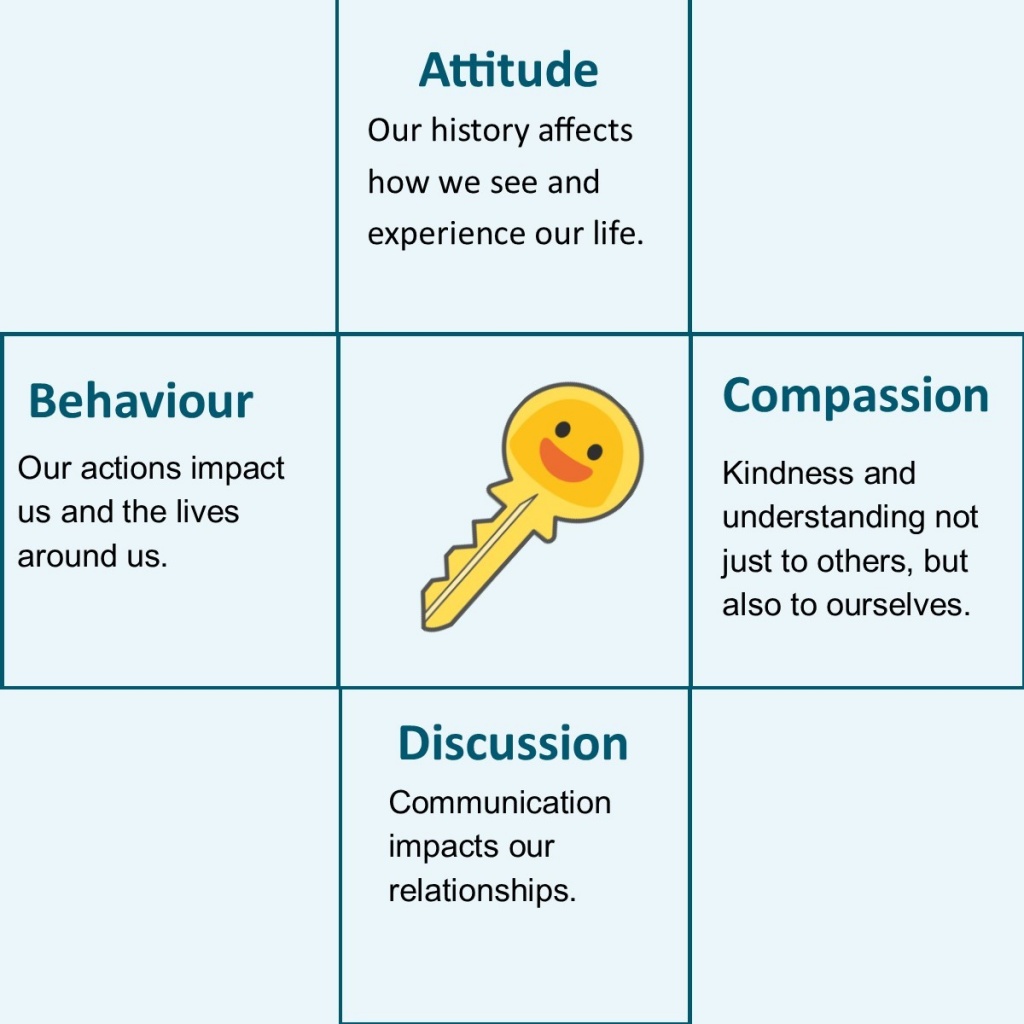
- Getting in Touch with Our Own Feelings:
- Seek out information, like stories (personal or written) films, art, poetry, etc, that share about the vulnerability of every human.
- Experiencing a degree of identification with the person’s experience.
- Acknowledging the Person:
- That sounds hard/frustrating (name it to tame it)
- This can be hard. I will do whatever I can to help.
- What do you need right now (2 options)?
- How can I help?
- Knowing Them:
- Tell me about what makes you feel calm/safe/happy
- What do I need to know to help you best when things feel hard?
- What are the things in your life that are most important?
- What worries you the most?
- Repair:
- I am sorry I X. I should’ve done X. (Not focusing on what they did to make you upset)
- I intended to do X, but I forgot. I’m sorry. I will do X now.
Dealing with Challenging Behaviour is a Continuing Process
There will never be a time when we completely have it or have all the right answers. We will make mistakes because we are only human, and that is okay!
Further Reading/Resources
Mindfulness Tools for Caregivers
10 Mindful Techniques for Everyday Life: http://www.spring.org.uk/2014/04/mindfulness-meditation-8-quick-exercises-that-easily-fit-into-your-day.php
The Art of Mindful Living Techniques: http://plumvillage.org/mindfulness-practice/
Digital Therapeutic Mindfulness Course for Better Mental Health: http://bemindful.co.uk/
Books for Caregivers
Full Catastrophic Living – Jon Kabat Zinn
A Path with heart – Jack Kornfield
Peace is every step – Thich Nhat Hanh
Anger: Wisdom for Cooling the Flames – Thich Nhat Hanh
When things fall apart: Heart advice for difficult times – Pema Chodron
How to talk so your kids will listen & listen so your kids will talk – Adele Faber & Elaine Mazlish
How to Build Family Resilience https://www.msd.govt.nz/about-msd-and-our-work/publications-resources/journals-and-magazines/social-policy-journal/spj20/family-resilience-and-good-child-outcomes-20-pages98-118.html
How to Help Children Handle Big Emotions
http://childhood101.com/2015/03/helping-children-manage-big-emotions/
Mindfulness Resources for Kids
Search: ‘www.amazon.ca › Books › Parenting & Relationships › Family Activities’
Calm Breathing Techniques: http://www.anxietybc.com/parenting/how-teach-your-child-calm-breathing
Guided Meditation for Kids with Instructions: www.annakaharris.com/mindfulness-for-children/
Mindfulness Books for Kids
Planting Seeds: Practicing Mindfulness with Children – Thich Nhat Hanh
Ahn’s Anger – Gail Silver
Moody Cow Meditates – Kerry Lee Mac Lean
What does it mean to be present – Rana DiOrio
No Ordinary Apple: A Story about Eating Mindfully – Sara Marlowe
A Boy and a Bear: The Children’s Relaxation Book – Lori Lite (Ages 3-10)
Peaceful Piggy Meditation – Kerry Lee MacLean
Mindfulness Resources for Teens
How to Teach Mindfulness to Teens: http://leftbrainbuddha.com/teaching-mindfulness-to-teens-5-ways-get-buy/
Mindfulness Books for Teens
The Mindful Teen – Dzung X Vo
Mindfulness for Teen Depression- Mitch R Abblett and Christopher Willard
About Inspire Community Outreach
Inspire Community Outreach (Inspire) is an incorporated non-profit social services charity providing evidence and culturally informed, family-centered education and programming, designed to meet the needs of those living with mental health issues and neurological/cognitive differences.
At Inspire, we support youth and families with unique challenges, while celebrating strength. Programs are designed to meet the needs of those living with mental health issues or neurological/cognitive differences. Inspire’s support is created by the community; from children who grew up with differences, families that include children with differences, and evidence from a clinical perspective.
Compassion. Inclusion. Education.
About the Founder
Angela Taylor is our Founder and CEO. She has a Bachelor of Arts degree from the University of Manitoba, with a major in Psychology and a minor in Sociology and a Post Bacc in Education, focusing on inclusion. She has her Master’s in Disability Studies from the University of Manitoba and is currently completing her PhD in complex families and wraparound care. She is a Mental Health and Accessibility Expert with an eclectic therapeutic approach that includes attachment, cognitive behaviour therapy, positive psychology and CPS model (Collaborative & Proactive Solutions) supports.
We’d love to hear from you!
References
- Allen, L., & Kelly, B. B. (2015). Transforming the workforce for children birth through age 8: A unifying foundation. Washington, D.C.: The National Academies Press.
- Angela Taylor (2021). Forever on Fire.
- Angela Taylor (2019). A Parent’s Perspective: The Experience of Accessing Autism Services. Retrieved from https://mspace.lib.umanitoba.ca/jspui_org/bitstream/1993/33863/1/Angela%20Taylor.pdf
- Association for Supervision and Curriculum Development. (2007). The Neuroscience of Joyful Education. Engaging The Whole Child, 64. Attachment. 2020. In Merriam-Webster.com. Retrieved January 28, 2020, from https://www.merriam-webster.com/dictionary/attachment
- Bartolotta, T., & Shulman, B. (2014). Language Development: Foundations, Processes, and Clinical Applications (Ch. 2). Burlington, MA: Jones & Bartlett Learning.
- Burnside, L. (2012) . Youth in care with complex needs: Special report for the office of the Children’s Advocate. Retrieved January 28, 2020, from https://drive.google.com/file/d/0B36kQtqSPlReV2UtSnQ2eGk3TTA/view?ts=5e29bf40
- Bossard, N., Braxton, A., & Conway, D. (2014). Meaningful family engagement. In G. Mallon & P. Hess (Eds.), Child welfare for the 21st century: A handbook of practices, policies, and programs (pp. 70–85). New York: Columbia University Press.
- Bøttcher, L., & Dammeyer, J. (2013). Disability as a risk factor? Development of psychopathology in children with disabilities. Research in Developmental Disabilities, 34(10), 3607-3617. doi:10.1016/j.ridd.2013.07.022
- Bourke-Taylor, H., Howie, L., Law, M., & Pallant, J. F. (2011). Self-reported mental health of mothers with a school-aged child with a disability in Victoria: A mixed method study. Journal of Paediatrics and Child Health, 48(2), 153-159. doi:10.1111/j.1440-1754.2011.02060.x
- Centre for Addiction and Mental Health (CAMH), (2012). A Review of Best and Promising Practices in Engaging Families in Mental Health Care of Children and Youth. http://servicecollaboratives.ca/wp-content/uploads/2014/05/Family-Evidence-Brief-SISC-September-2013.pdf
- Child Welfare Information Gateway. (2016). Family engagement: Partnering with families to improve child welfare outcomes. Washington, DC: U.S. Department of Health and Human Services, Children’s Bureau.
- Chochinov, H. M. (2007). Dignity and the essence of medicine: the A, B, C, and D of dignity conserving care. Bmj, 335(7612), 184-187. doi:10.1136/bmj.39244.650926.47
- Chovil, N. (2009). Engaging Families in Child & Youth Mental Health: A Review of Best, Emerging and Promising Practices. The F.O.R.C.E. Society for Kids’ Mental Health.https://www.forcesociety.com/sites/default/files/Engaging%20Families%20in%20Child%20%26%20Youth%20Mental%20Health.pdf
- Collins, B., & Collins, T. (1990). Parent-Professional Relationships in the Treatment of Seriously Emotionally Disturbed Children and Adolescents. Social Work, 35(6), 522-527. doi:10.1093/sw/35.6.522
- Cuzzocrea, F., Larcan, R., & Westh, F. (2013). Family and parental functioning in parents of disabled children. Nordic Psychology, 65(3), 271-287. doi:10.1080/19012276.2013.824201
- Dostaler T, Cannon S. (2011) Developing a family engagement training strategy. Ontario. Ontario Centre of Excellence for Child and Youth Mental Health. http://www.excellenceforchildandyouth.ca/sites/default/files/family_engagement_report.pdf
- Duchnowski, A. J., & Kutash, K., (2007). Family-driven care. Tampa, FL: University of South Florida, The Louis de la Parte Florida Mental Health Institute, Department of Child & Family Studies.
- Emerson, E. (2003). Mothers of children and adolescents with intellectual disability: social and economic situation, mental health status, and the self-assessed social and psychological impact of the child’s difficulties. Journal of Intellectual Disability Research, 47(4-5), 385-399. doi:10.1046/j.1365-2788.2003.00498.x
- Freedman, B. H., Kalb, L. G., Zablotsky, B., & Stuart, E. A. (2011). Relationship Status Among Parents of Children with Autism Spectrum Disorders: A Population-Based Study. Journal of Autism and Developmental Disorders, 42(4), 539-548. doi:10.1007/s10803-011-1269-y
- Gladstone, J., Dumbrill, G., Leslie, B., Koster, A., Young, M., & Ismalia, A. (2014). Understanding worker-parent engagement in child protection casework. Children and Youth Services Review, 44, 56–64. Retrieved from www.sciencedirect.com/science/article/pii/ S0190740914002126
- Graby, Steve (2015). Neurodiversity: Bridging the gap between the disabled people’s movement and the mental health system survivors’ movement?, Madness, distress and the politics of disablement, (pp.231-243), DOI: 10.2307/j.ctt1t898sg.2
- Gray, K. M., Piccinin, A. M., Hofer, S. M., Mackinnon, A., Bontempo, D. E., Einfeld, S. L., Tonge, B. J. (2011). The longitudinal relationship between behavior and emotional disturbance in young people with intellectual disability and maternal mental health. Research in Developmental Disabilities, 32(3), 1194-1204. doi:10.1016/j.ridd.2010.12.044
- Gundersen, T. (2012). Human dignity at stake – how parents of disabled children experience the welfare system. Scandinavian Journal of Disability Research,14(4), 375-390. doi:10.1080/15017419.2011.592955
- Hiebert-Murphy, D., Trute, B., & Wright, A. (2011). Parents’ Definition of Effective Child Disability Support Services: Implications for Implementing Family-Centered Practice. Journal of Family Social Work, 14(2), 144-158. doi:10.1080/10522158.2011.552404
